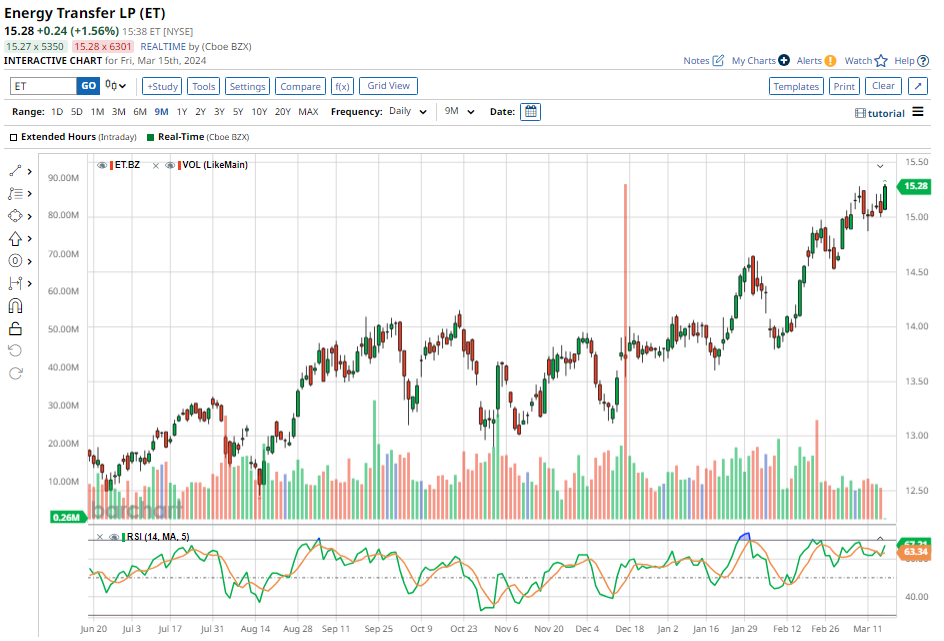Amid escalating geopolitical tensions and uncertainty over global demand, the energy sector has witnessed notable turbulence in recent months. However, crude futures for April delivery rallied 3.8% this week, hitting new 2024 highs after an IEA report highlighted rising demand and potential supply deficits in 2024 due to OPEC+ cuts, Ukrainian drone attacks on Russian refineries, Red Sea ship incidents, and expectations of Federal Reserve rate cuts, which have historically bolstered demand.
Perhaps even more compelling for energy investors this month is the news that the Brazilian state-run oil company Petroleo Brasileiro S.A. (PBR) came up short on 2023 dividends. This news spilled beyond Petrobras, causing a significant downturn in the broader Brazilian stock market, as the oil major accounts for 13% of the benchmark Ibovespa index.
In response, analysts downgraded Petrobras – but as crude futures surge, there are still plenty of high-quality energy stocks offering robust dividend yields. Against this backdrop, let’s examine three energy stocks that Wall Street analysts favor over Petrobras. These stocks have significant upside potential to complement their attractive dividend yields.
Energy Dividend Stock #1: Energy Transfer LP (ET)
Texas-based Energy Transfer LP (ET) is engaged in the pipeline transportation and storage of natural gas, crude oil, natural gas liquids (NGLs), refined products, and liquid natural gas (LNG). The company is one of the largest and most diversified midstream energy companies in North America, with over 125,000 miles of pipelines and associated energy infrastructure in 44 states. Its market cap currently stands at $50.67 billion.
Energy Transfer stock is up 10.7% on a YTD basis, outperforming the S&P 500 Index’s and S&P 500 Energy Sector SPDR’s (XLE) 7.4% and 9.2% respective gains over this time frame. Plus, with company insiders picking up the shares at a healthy pace, the stock could have more upside in the future.

The stock currently trades at 9.68 times forward earnings and 0.58 times forward sales, lower than the oil and gas storage and transportation industry averages of 11x and 1.41x, respectively.
Energy Transfer has maintained a consistent dividend payment record since 2006. On Feb. 20, ET paid a quarterly dividend of $0.315 per share, which is an increase of 3.3% compared to the fourth quarter of 2022. Its annualized dividend of $1.26 per share offers a healthy dividend yield of 8.25%. As a limited partnership, ET pays out most of its cash flow as dividends, and is targeting an annual distribution growth rate of 3% to 5%.
The company boasts a diverse energy asset portfolio across various locations, ensuring robust and balanced earnings. Its Lake Charles LNG Terminal strengthens its global LNG presence and enhances Energy Transfer’s overall performance. With a higher proportion of fee-based cash flows, Energy Transfer minimizes commodity price risks and bolsters earnings stability.
Energy Transfer’s merger with Crestwood Equity Partners LP in November 2023 solidified its midstream sector dominance. This immediately beneficial transaction adds substantial cash flows from firm and long-term contracts, enhancing distributable cash flow per unit.
As of Dec. 31, 2023, the company’s adjusted EBITDA and distributable cash flow increased to $13.7 billion and $7.6 billion, respectively. Energy Transfer expects its 2024 adjusted EBITDA to range between $14.5 billion and $14.8 billion, with the midpoint representing about a 7% increase from the year-ago adjusted EBITDA of $13.7 billion. With the potential for further growth and improvement, Energy Transfer is well-positioned to maintain reliable earnings and dividend distributions.
Exploring the Landscape of Energy Dividend Stocks
When it comes to the world of stock trading, the tides can shift as quickly as the wind. Today’s winners may be tomorrow’s losers, and vice versa. However, for those who dare to venture into the unpredictable waters of the stock market, there are a few beacons of hope in the form of Energy Dividend Stocks. Let’s dive into the specifics.
The Resilient Rise of Energy Transfer
Energy Transfer is currently basking in the warm glow of a “Strong Buy” rating from analysts, with the majority of experts firmly in support of its potential. Out of the 15 mavens of the market, 13 have given it a resounding “Strong Buy,” while one opts for a “Moderate Buy,” and only one suggests a cautious “Hold.”
The average analyst price target for Energy Transfer perches at $17.71, signaling an inviting 15.9% upside. Yet, the lofty projection of $22, scribbled by UBS in February, paints a picture of a possible 43.9% rally. The winds of fortune seem to be blowing in Energy Transfer’s favor.
The Sturdy Fortress of Shell Plc
Stepping into the scene in 1907, Shell Plc (SHEL) stands tall as an energy and petrochemical juggernaut, offering an array of services under its belt. With a substantial market cap of $214.5 billion, Shell has been on a steady voyage, gaining 18.4% over the last 52 weeks, mirroring the trajectory of the XLE.
Trading at 8.04 times forward earnings and 0.65 times forward sales, Shell seems to be a beacon of resilience in a turbulent market. The recent announcement of a $3.5 billion share buyback and a noteworthy dividend raise further solidify Shell’s position as a stalwart in the industry.
The Tenacious Tenure of Baker Hughes Company
Hailing from Houston, Baker Hughes Company (BKR) emerges as a global provider of oilfield services, catering to various sectors with finesse. With a market cap of $31.78 billion, Baker Hughes has been steaming ahead, marking a notable 20.6% rise over the past year, outperforming the broader market.
Delving into the financials, Baker Hughes shines brightly with a tactful dividend payout strategy and an eye on sustainable growth. With a consistent track record of dividend increases and a keen focus on shareholder value, Baker Hughes paints a picture of stability and resilience in the ever-shifting terrain of the stock market.

